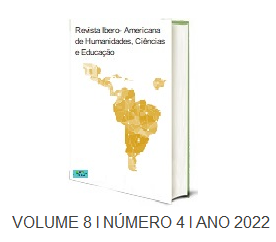USE OF THE ARTERIAL LINE IN HEMODYNAMIC MONITORING THE CRITICALLY ILL PATIENT
DOI:
https://doi.org/10.51891/rease.v8i4.4992Keywords:
Arterial line. Hemodynamic Monitoring. Critically ill patient.Abstract
Background: Due to a considerable technological evolution, hemodynamic monitoring performed using minimally invasive devices, such as the arterial line, which has proven to be the reference in invasive blood pressure assessment, allows obtaining reliable clinical data, minimizing the degree of invasiveness of clinical devices, maximizing health gains. Objective: To analyze the existing scientific evidence on the use of arterial line for hemodynamic monitoring in critically ill patients. Methodology: Systematic literature review (SLR), with analysis of articles published between 2015 and 2022 in the PMC, PubMed, B-ON and EBSCO databases, with MeSH and DeCS descriptors, being selected 14 articles. Results: The studies showed that the use of the arterial line allows, in addition to direct hemodynamic parameters, such as heart rate, blood pressure and mean arterial pressure, to obtain other relevant hemodynamic values, whether obtained through calculation, such as cardiac output and systolic volume values, or obtained through the combination between methods and devices, such as the cardiac index or arterial compliance, also allowing frequent blood draws, without recurrent punctures. Conclusions: It was evident that the arterial line, due to its low degree of invasiveness, ease of placement and handling, as well as its clinical applicability in various fields, is, despite its limitations, currently considered as the reference clinical device to obtain both safe blood pressure values and other reliable clinical data for hemodynamic stabilization of critically ill patients.
Downloads
Downloads
Published
How to Cite
Issue
Section
Categories
License
Atribuição CC BY

